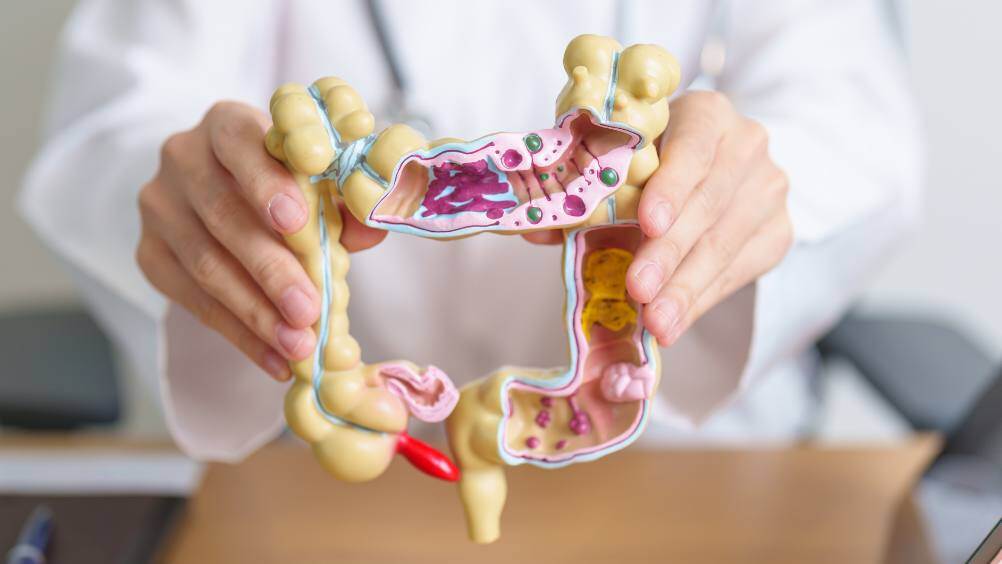Did you know that many newly diagnosed colorectal cancer patients never notice symptoms? That’s because screening technology for colon and rectal cancers has made it possible to find these cancers at a much earlier stage before it’s grown to the point where symptoms are noticeable.
Most people have heard of a colonoscopy. It’s the outpatient procedure that allows the doctor to look inside the colon for any signs of cancer or pre-cancer. Did you know there may be an alternative to a colonoscopy for those with an average risk of developing colorectal cancer? At-home colorectal cancer screening kits are now readily available for those who qualify.
Watch the video below to learn about at-home colorectal cancer test kits compared to colonoscopies.
While at-home colon cancer tests can offer a convenience that colonoscopies just can’t, they should only be used as a starting point — a way to monitor your health and gauge when a colonoscopy would be better for your personal situation. In some cases, this could last for many years as long as the results continue to come back negative and your doctor is comfortable screening in this manner.
The Age to Start Colorectal Cancer is Now 45
Many years prior, you didn’t start colorectal cancer screening with a colonoscopy until you were 50. However, the rate of new cases among individuals in their 30s and 40s is steadily increasing. Because of this, the American Cancer Society recommends you start screening at age 45. This can be even earlier if you’re at a higher risk for developing this type of cancer.
Related reading: Colorectal Cancer: Why Are More Younger People Being Diagnosed?
High-risk individuals are those who have the following:
- Certain pre-existing conditions, such as ulcerative colitis or type 2 diabetes
- A genetic syndrome that leads to colorectal cancer
- A family or personal history of colorectal cancer
- The presence of a few lifestyle factors, such as the following, can put you at average risk of developing colorectal cancer:
- Being overweight
- Being a smoker
- Eating a diet with a lot of processed or smoked foods
- Drinking alcohol
Talk to your primary care physician about your personal risk factors – those you can control and those you cannot – to see if you should start screening earlier than age 45.
Commonly Used At-Home Colon Cancer Tests
An at-home screening kit to check for the presence of blood in a stool sample is called a fecal occult blood test (FOBT). Since occult blood can’t be seen with the naked eye, a stool sample must be submitted to a lab where it can be inspected thoroughly for the microscopic presence of blood. This method of screening helps doctors diagnose benign (noncancerous) conditions and detect colorectal cancer if it is present.
The US Food and Drug Administration (FDA) has approved a few different stool tests that can be used for colorectal cancer screening. The most commonly known is the Cologuard test. Your doctor will order this test for you. Insurance typically pays for some or all of these preventive care screening tests.
It’s really important you follow the directions carefully and use kits before they expire to be sure you get the most accurate results. Regardless of the at-home test, women should avoid testing while menstruating. Doing so can cause a false positive.
Fecal Immunochemical Test (FIT or iFOBT)
The affordable and increased sensitivity in detecting blood in the stool makes the FIT a widely-used test. The testing process involves the use of antibodies that bind to hemoglobin protein, which indicates whether blood is present in the stool. Collecting a stool sample is relatively simple: a fecal sample is scraped with a small probe, inserted into a sampling container, and returned to the lab. While changes in diet are not required before testing for the FIT, you may be asked to modify any medications known to affect test results. Talk with your healthcare provider about anything you should avoid or modify prior to testing.
Stool DNA Test (FIT-DNA)
This is a combination test that detects blood in the stool and screens DNA cells that are shed from the colon and the rectum during a bowel movement. This is the category that Cologuard falls into.
Upon receiving the sample, the lab will test for blood and extract DNA from the stool to identify whether or not mutated or abnormal genes known to cause colorectal cancer are present. This type of test collects a full stool sample and does not require dietary changes.
Guaiac FOBT (gFOBT)
The gFOBT also looks for blood in the stool — specifically, the presence of heme, a component of hemoglobin. In this test, applicator sticks are used to collect a few samples from different bowel movements. The samples are smudged onto a paper card coated with guaiac and then sent back off for testing. At the lab, hydrogen peroxide will be added to the card—a card turning blue means that blood is present.
Because this test is very sensitive, your doctor might ask you to stop eating foods that contain heme while preparing for testing to avoid a false positive. This might mean eliminating red meat, poultry, seafood, turnips, horseradish, and citrus fruits and juices for a time. Inaccurate results can also be caused by certain nonsteroidal anti-inflammatory drugs (NSAIDs) and supplements, such as Vitamin C and iron. Ask your doctor if there are any adjustments you need to make before taking the test.
The Screening Results: What They Mean For You
One downside of the at-home test is you’ll have to wait a little longer to get results compared to the results of a colonoscopy. Your at-home test results can come back positive, negative, or inconclusive.
Positive result: What does it mean?
If your test detects blood, your doctor will recommend additional testing, such as a colonoscopy, to determine the source of the blood.
If you had a FIT DNA test, you could be negative for blood but positive for a genetic mutation that is associated with colorectal cancer. If this is noted, your doctor may want to add a colonoscopy to the screening process to see if there are any pre-cancers that can be seen.
Negative result: Is that good?
If you receive a negative test, it means that no blood was found in the sample, and no DNA changes were noted that would cause concern for the development of colorectal cancer. Those with negative results may be allowed to use the at-home tests periodically. However, a colonoscopy is still the gold standard in colorectal cancer screening, and one will be suggested for you occasionally, even if your at-home tests look clean.
What happens if you have an inconclusive result?
This typically means there was an issue with your specimen. In cases such as this, your primary care physician will probably request that you take the test again, or you could be asked to go in for a colonoscopy.
Talking with your doctor can help you better understand the risks of receiving either a false-positive or false-negative result. Despite the risk, the National Cancer Institute points to probable benefits, “Studies show that some screening tests for colorectal cancer help find cancer at an early stage and may decrease the number of deaths from the disease.”
Don’t Skip Your Colorectal Cancer Screenings. It Could Save Your Life.
The Willamette Valley Cancer Institute (WVCI) recommends regular screening to prevent or provide early detection of colorectal cancer. Talk with your primary care physician by age 30 to discuss your family history and risk factors so you can decide when to start screening.
If cancer is found during a colonoscopy or through other tests, WVCI’s oncologists are here to provide personalized treatment options based on your colorectal cancer stage and its location. We are also available to provide second opinions if you or a loved one has received a colorectal cancer diagnosis.
Treatments are available close to home in Albany, Corvallis, Eugene, Florence, Lincoln City, and Newport, Oregon.



